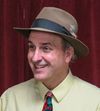Grab Bag #51
Three years of San Francisco Story means an over-long Grab Bag with German churches, Danish tug-of-war teams, bowling, and Woody wool-gathering.
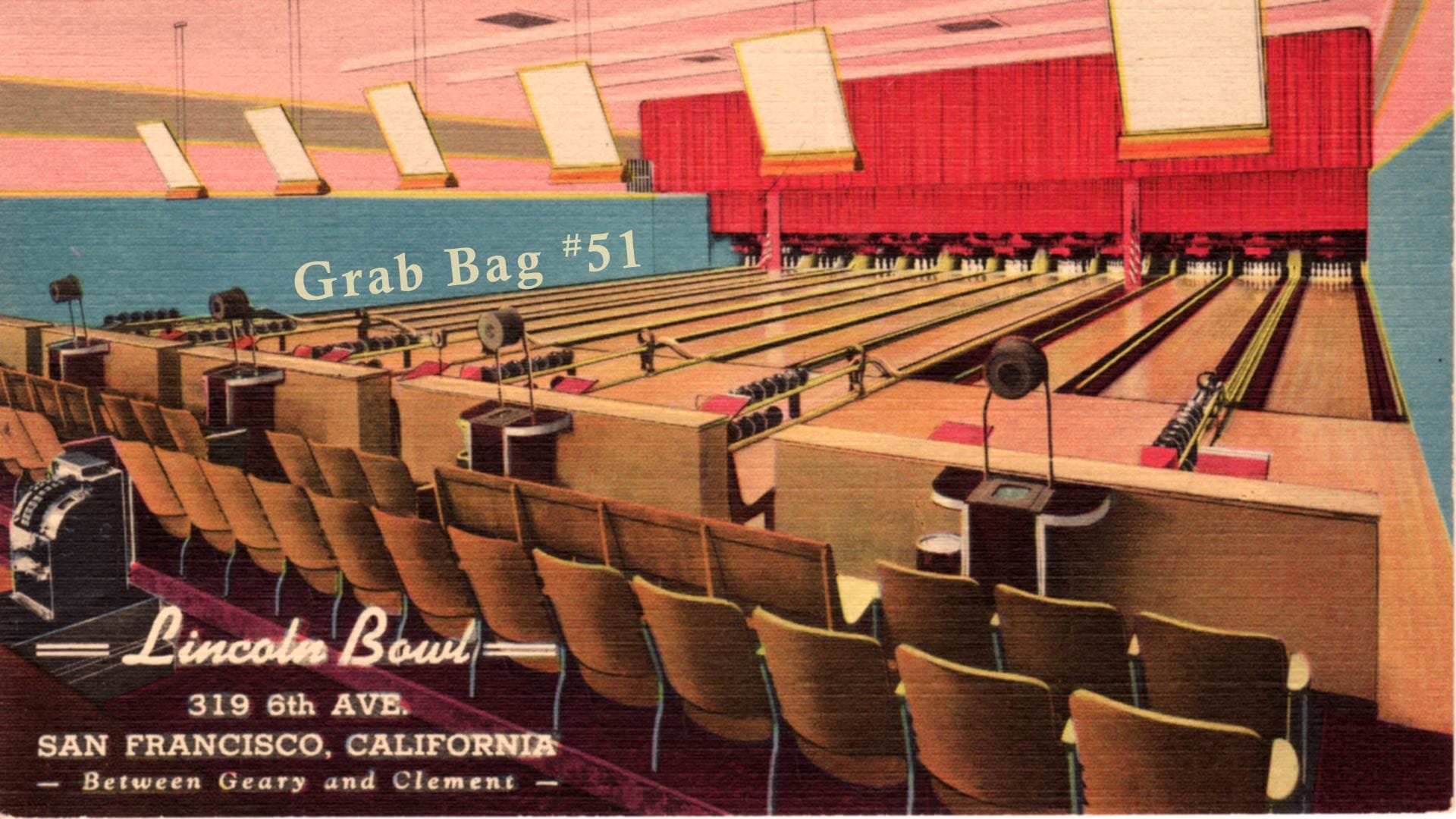
Happy third anniversary to you all. For 150-something straight Wednesdays I have sent out a San Francisco history-ish email.
To commemorate the occasion, this Grab Bag is too long and open to everyone. The Friends of Woody are a generous bunch and do not feel deprived that others get to share in the privilege of Woody verbosity now and then.
Oh, and Friends of Woody...
Anniversary Thanks #1
I know many of you just renewed or have a renewal about to happen. I want to thank you so much for the support you have given me with this project. It’s been fun for me and hopefully for you.
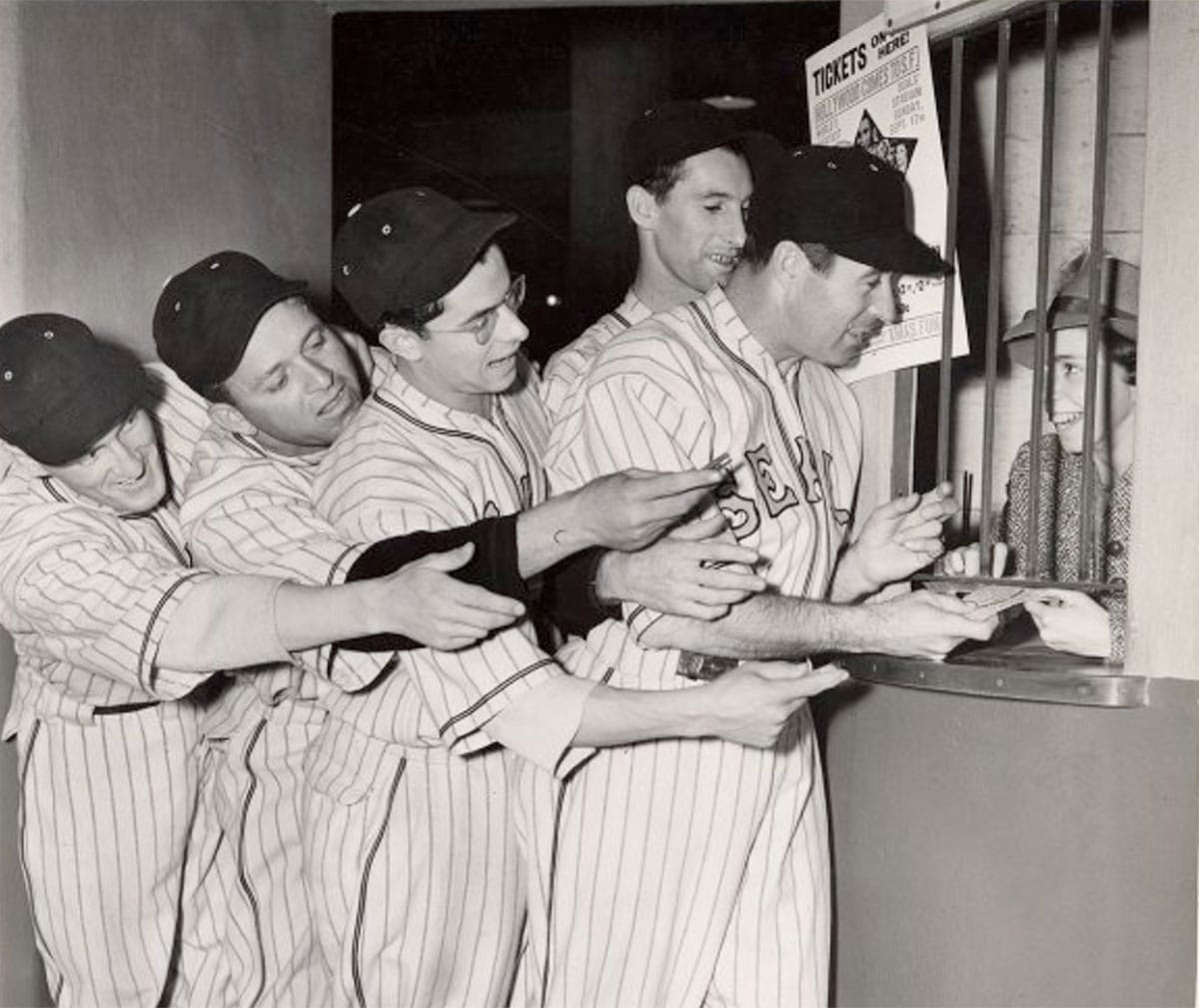
If you are not a Friend, consider joining our not-a-cult. We’re still working on a secret handshake…
Grab Bag Guess Where
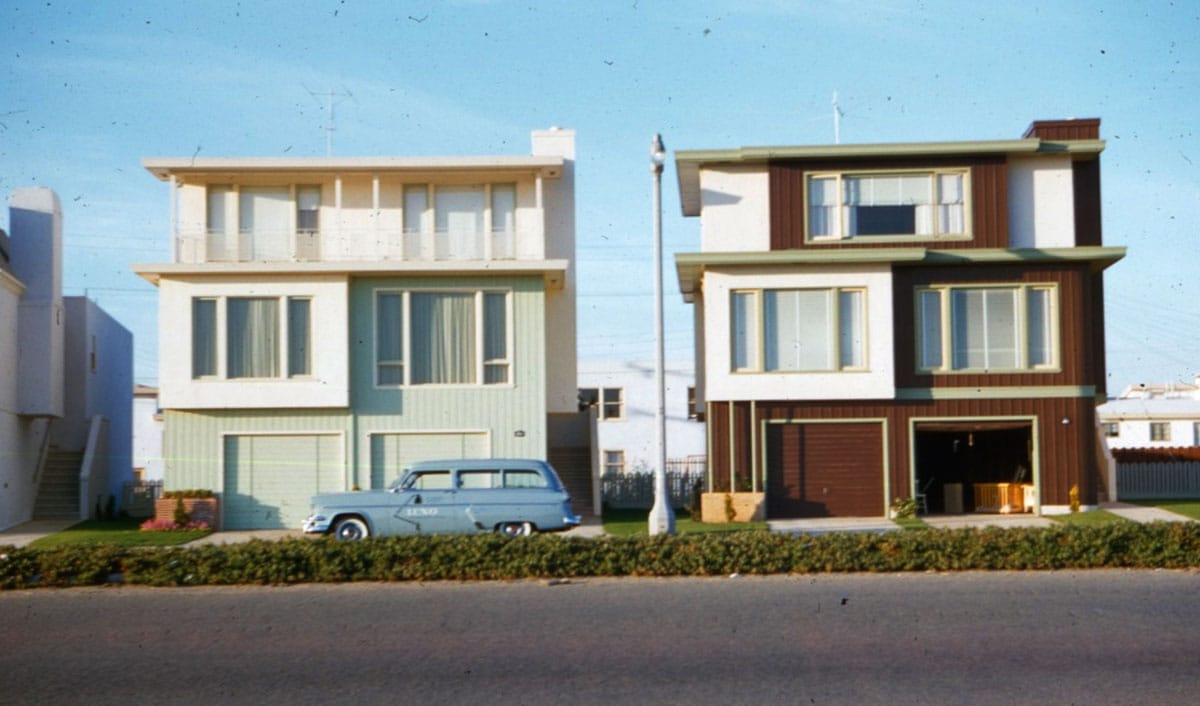
That’s some mid-century awesomeness up there, people. Where and when-ish are we in the great city of San Francisco? Answer at the end.
Goldne Pforte
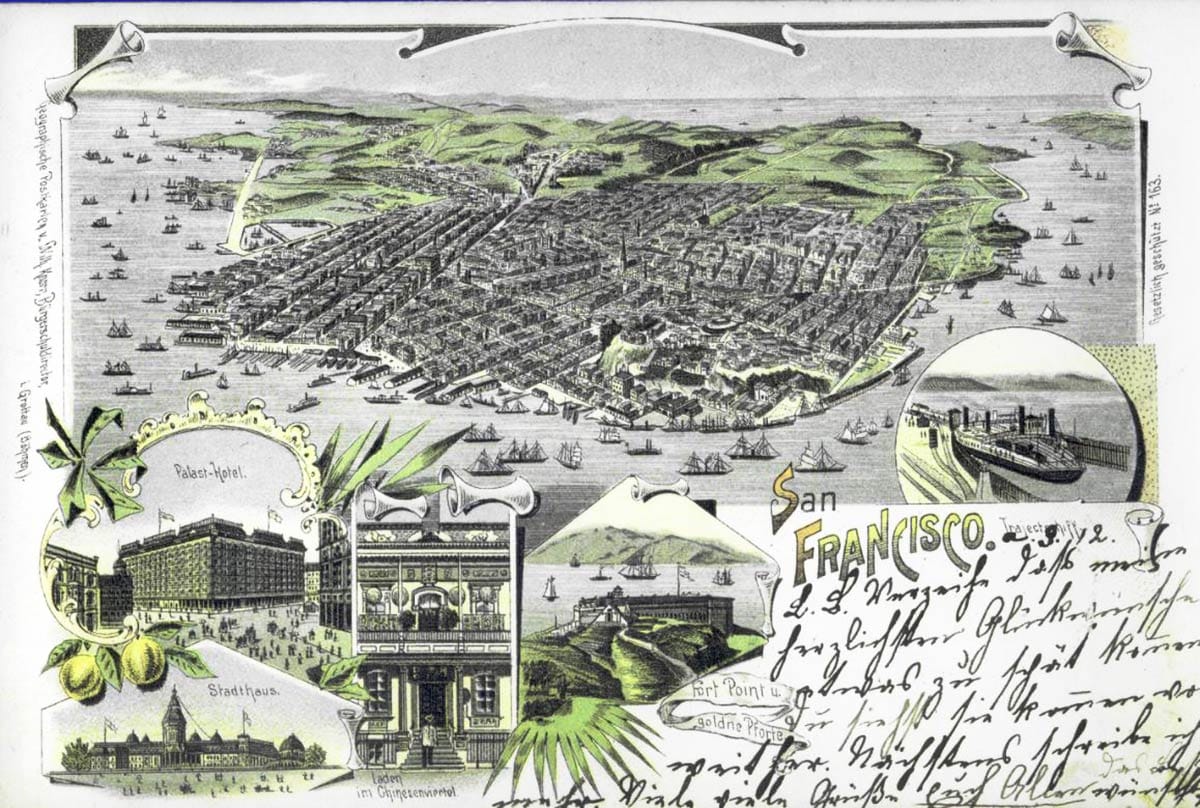
Are the tourists returning yet?
The postcard above sent by a visiting German (Dutch? No, I think German) in 1903 has an interesting, if not wholly accurate birds-eye view of the city.
Telegraph Hill is the most prominent feature, like a big beehive. The top city attractions according to the inset artwork are the Palast Hotel, the Stadthaus (a relatively correct view of the old City Hall), laden im Chinesenviertel, (with the shopkeeper posing in front), Fort Point u goldne pforte (not as euphonious as “Golden Gate”), and… the Hunters Point drydock? Not sure on that last one.
Good luck reading and translating the inscription. I’m guessing it’s something along the lines of “wish you were here.”
Anniversary Thanks #2
Back in the early 1990s, Nancy gave me the encouragement and push to follow-up and research the truth about some of the crazy family stories I grew up with, which led me to other local history, which eventually put us all here together.
Here’s an example story: Did you know that Tom Sawyer and my great-great grandfather J. E. Slinkey were pals?
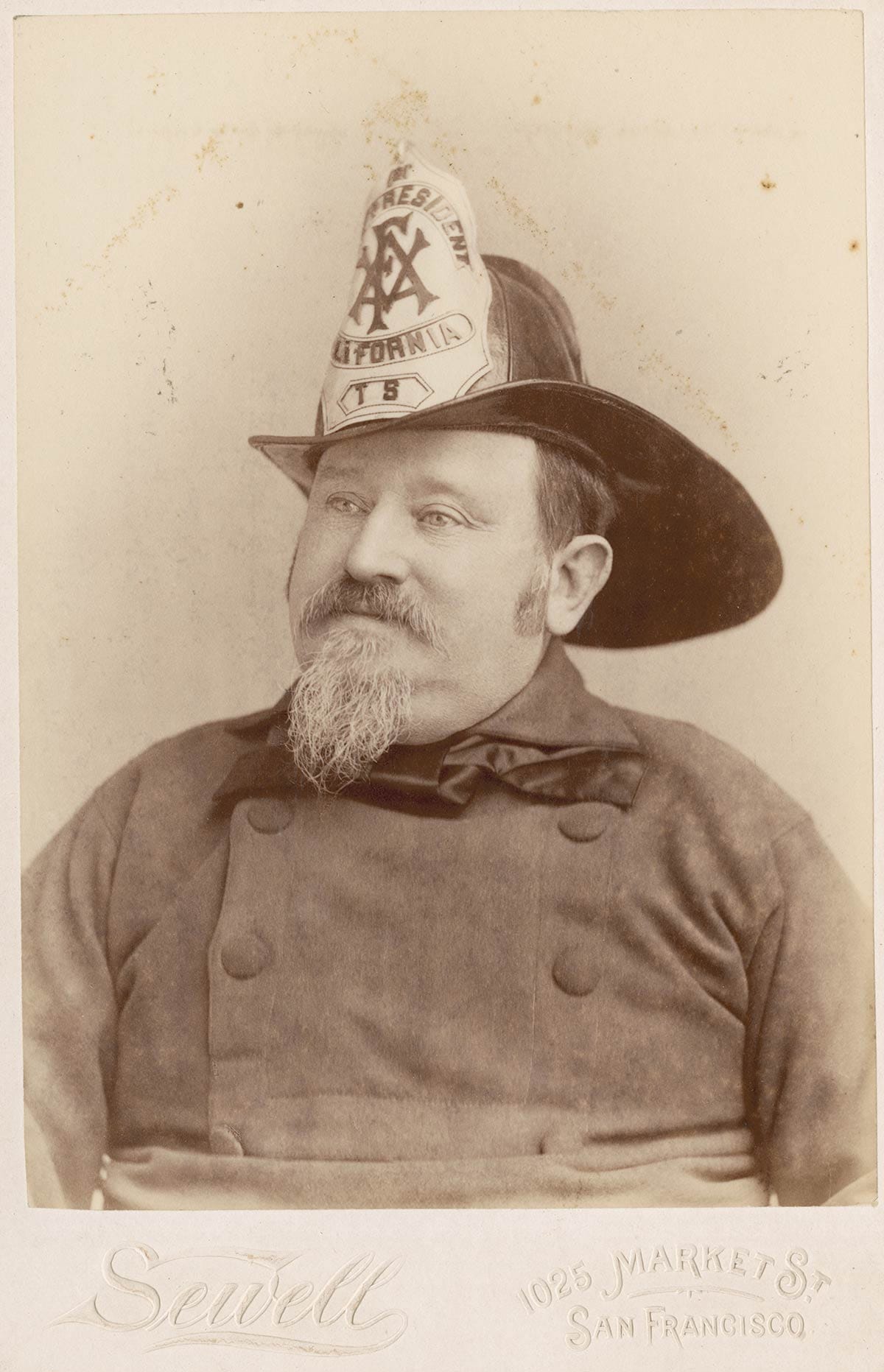
How can Mark Twain’s fictional character be a friend to my Colonel Slinkey, who came from Australia to San Francisco?
The namesake of the clever Missouri boy from the books lived in San Francisco, supposedly met Twain here, and was, for a time, president of the Society of Old Friends, the fraternal organization my ancestor ran as secretary for decades.
Crazy family story, sorta true… Thanks for putting me on the researching weird history path, Nancy.
Anniversary Thanks #3
David Gallagher is Friend of Woody #1 for a reason. We are both endlessly curious about the arcane and trivial and both do not take ourselves seriously (to a fault perhaps). We all need someone who will listen and be interested in our weird obsessions.
For some folks, it’s Star Trek or dung beetles or Pontiac GTOs or Taylor Swift lyrics. For David and me, it’s identifying a gas station sign in a fuzzy old photo or going out and finding that weird thing still there under that whatchamacallit. Thanks, David.
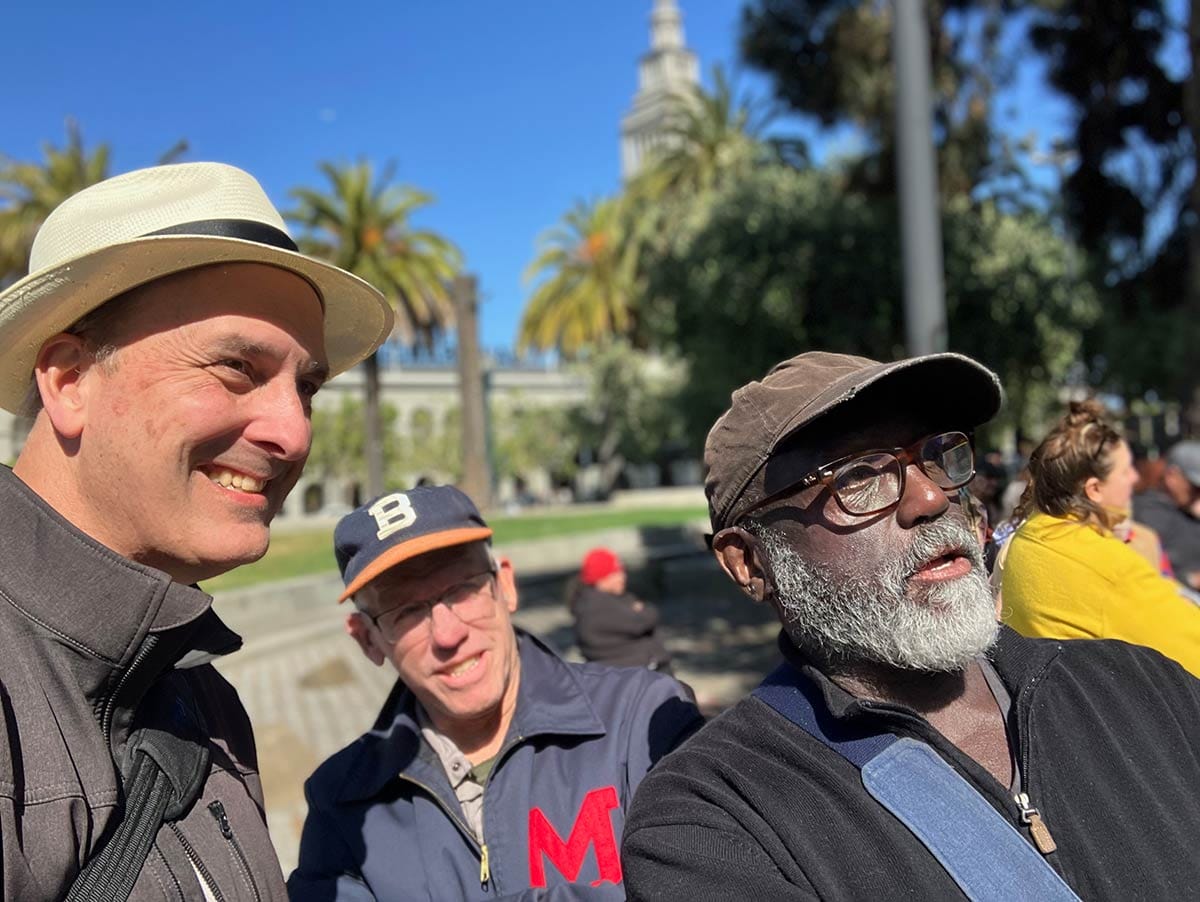
There are many other San Francisco history friends who over the past quarter of a century have acted as resources, experts, and sympathetic ears. And there are people who research and walk and talk in our local history community who I truly admire.
Thanks for keeping me inspired John Martini, Doug Chan, Nicole Meldahl, John Freeman, LisaRuth Elliott, Richard Brandi, Chris Carlsson, Judi Leff, Peter Field, Evelyn Rose, Chris Pollock, Gary Stark, Glenn Koch, Lorri Ungaretti, Angus Macfarlane, Amy O’Hair, Chris VerPlanck, Jamie O’Keefe, Ben Zotto, Emiliano Echeverria, Bill Kostura, Peter Linenthal, and maybe you?
Slow News Day
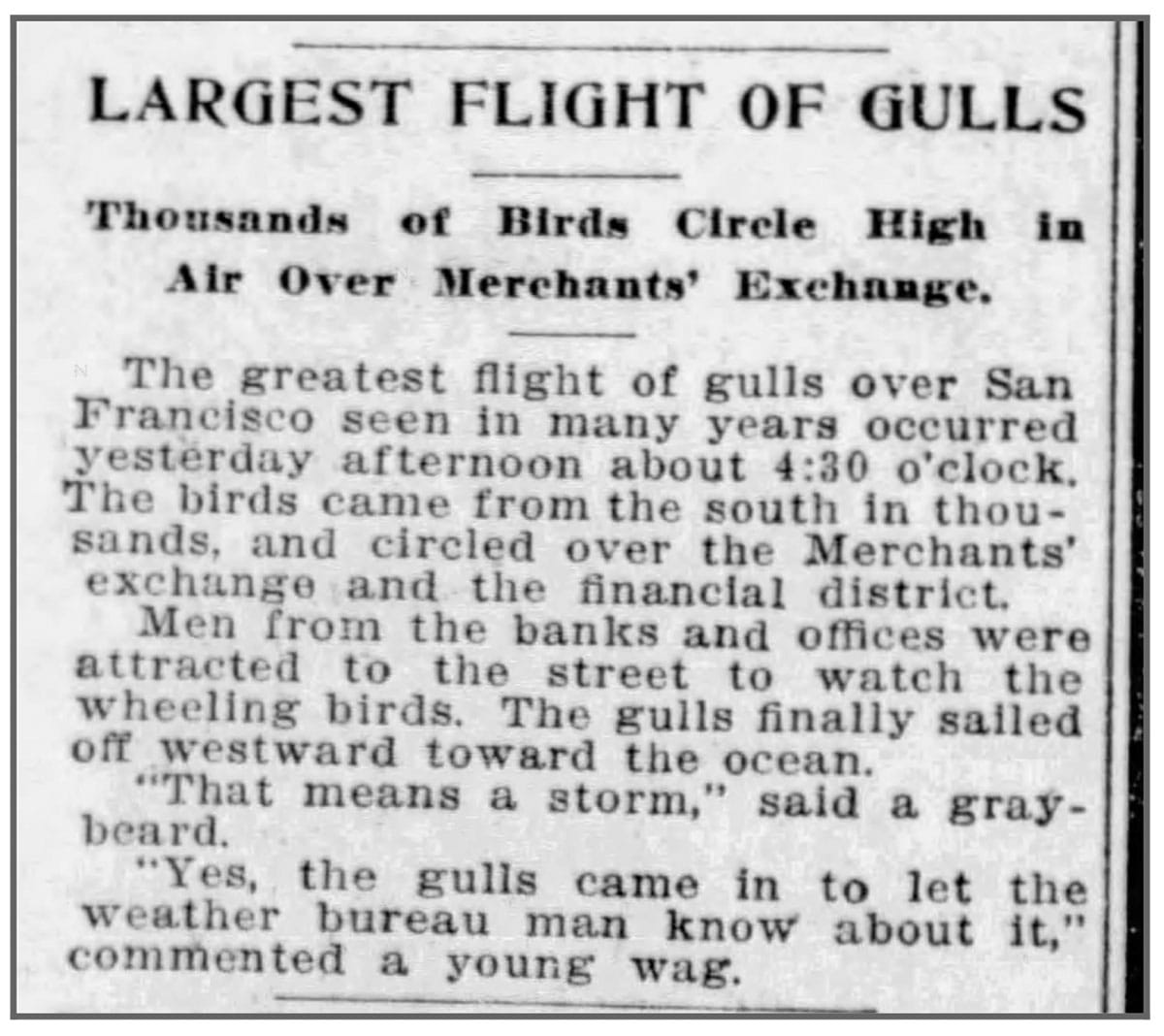
In the days of four major daily newspapers, when editors needed to fill column-inches, you would occasionally get short bits like this one from the Examiner. We still have weather to write nothing about, but I, for one, would welcome a daily big-media news item on, say, a tree blossoming or a squirrel seen having a tiff with a raven.
No Escaping the Robots
Speaking of slow-day fantasies… I have these little daydreams—perhaps you do, too—in which I see myself retiring and, free from the responsibilities of work, I give up having a cell phone.
(Did you just feel that tingle up your spine? It’s like taking a bite of chocolate mousse, is it not?)
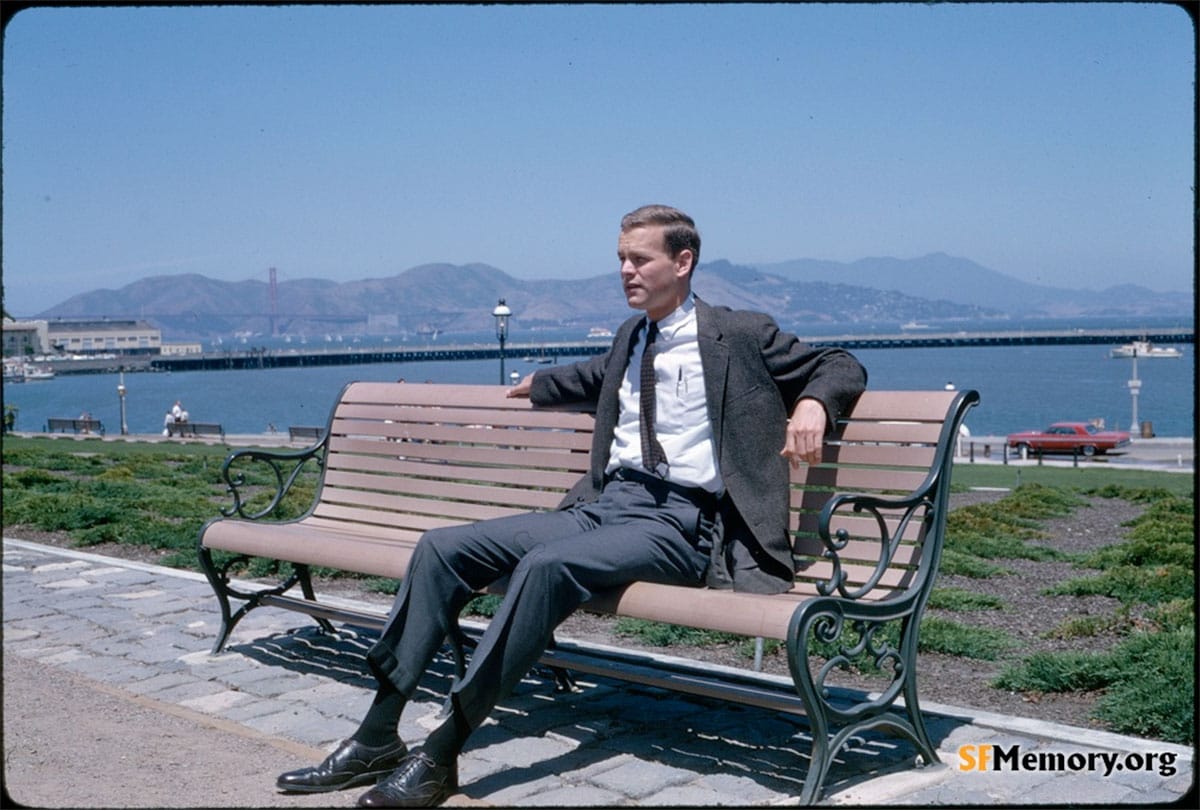
Yes, I am old. I own cassette tapes. I write in cursive. I remember when it was possible not to have a little computer in your pocket.
Here’s the cold water:
“The idea of promoting a different cultural paradigm and employing technology as a mere instrument is nowadays inconceivable. […] It has become countercultural to choose a lifestyle whose goals are even partly independent of technology, of its costs and its power to globalize and make us all the same.”
Depressingly, that quote is not from some AI peddler, but from the late Pope Francis. Even the dead pope thinks I’m tripping to believe I can get off the sweet, sweet 5G.
Because my Catholic roots go deep, when the news broke of a new pope—born in the United States!—my phone blew up with texts from mom, brother, co-worker, old school friends…
Without my cell phone, maybe I still wouldn’t know…
Hermit of Russian Hill
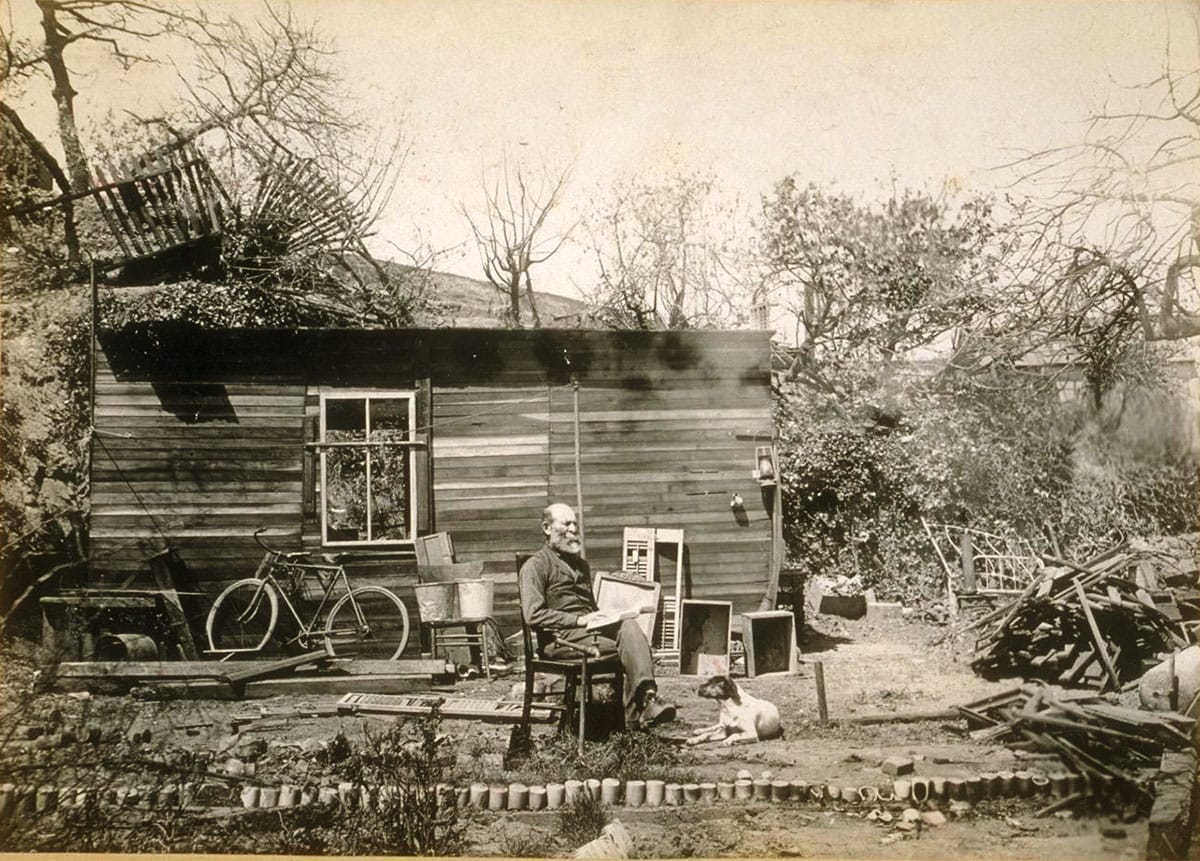
That is not me in my no-cellphone fantasy days, but the “Hermit of Russian Hill,” according to police captain Jesse B. Cook in 1906. A chair, a book, one wall, and a dog: what else do you need?
This gentleman is obviously a survivor of the April 1906 earthquake and fires. Not sure what part of Russian Hill he is on... the slope in the background might help.
A patch of the hill around the corner of Taylor Street and Broadway survived the inferno which incinerated most of the city around it. Here’s a view to the northwest of that small Eden:
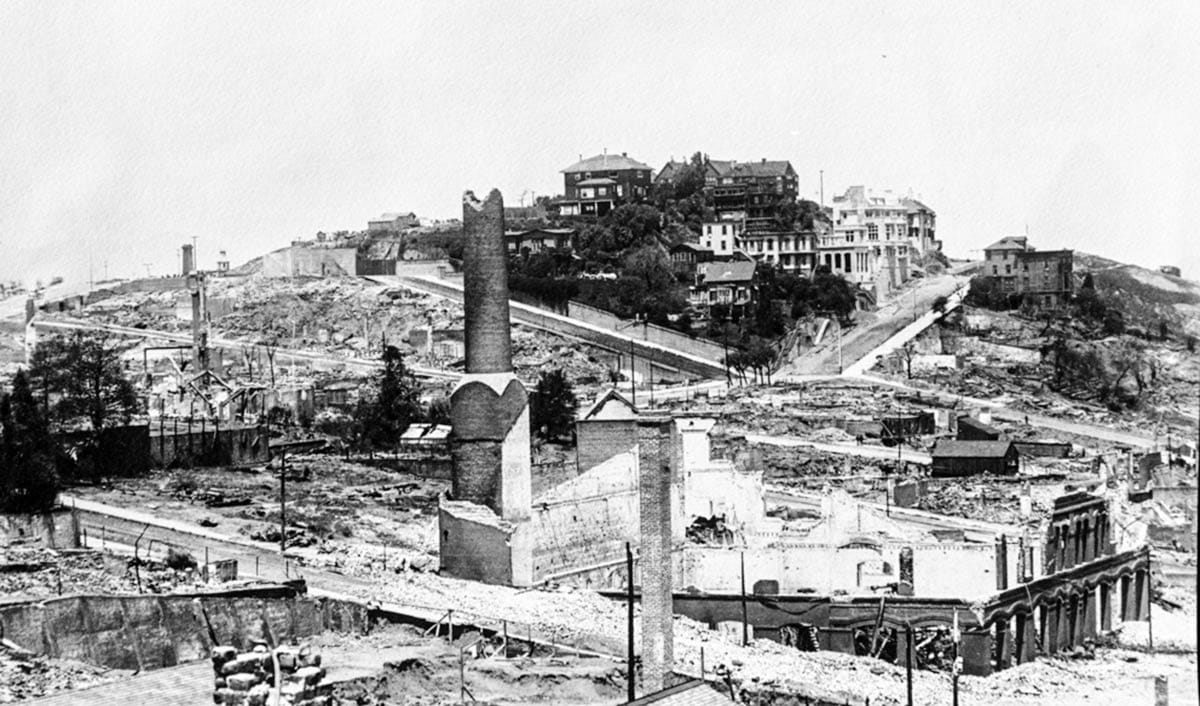
The residents fought bravely to defend their block when the fires approached and had a bit of luck as well...
House of the Flag
Eli T. Sheppard’s property at the crest of Taylor Street on the corner of Vallejo Street possessed a prominent flag pole. Sheppard had his top-floor tenant raise and take down Old Glory each day.
On April 20, 1906, the post-quake fires were closing in and the household decided to abandon the property. Just after fleeing, the daily flag-raiser had misgivings. “If the house has got to go, let it go with the flag flying.”
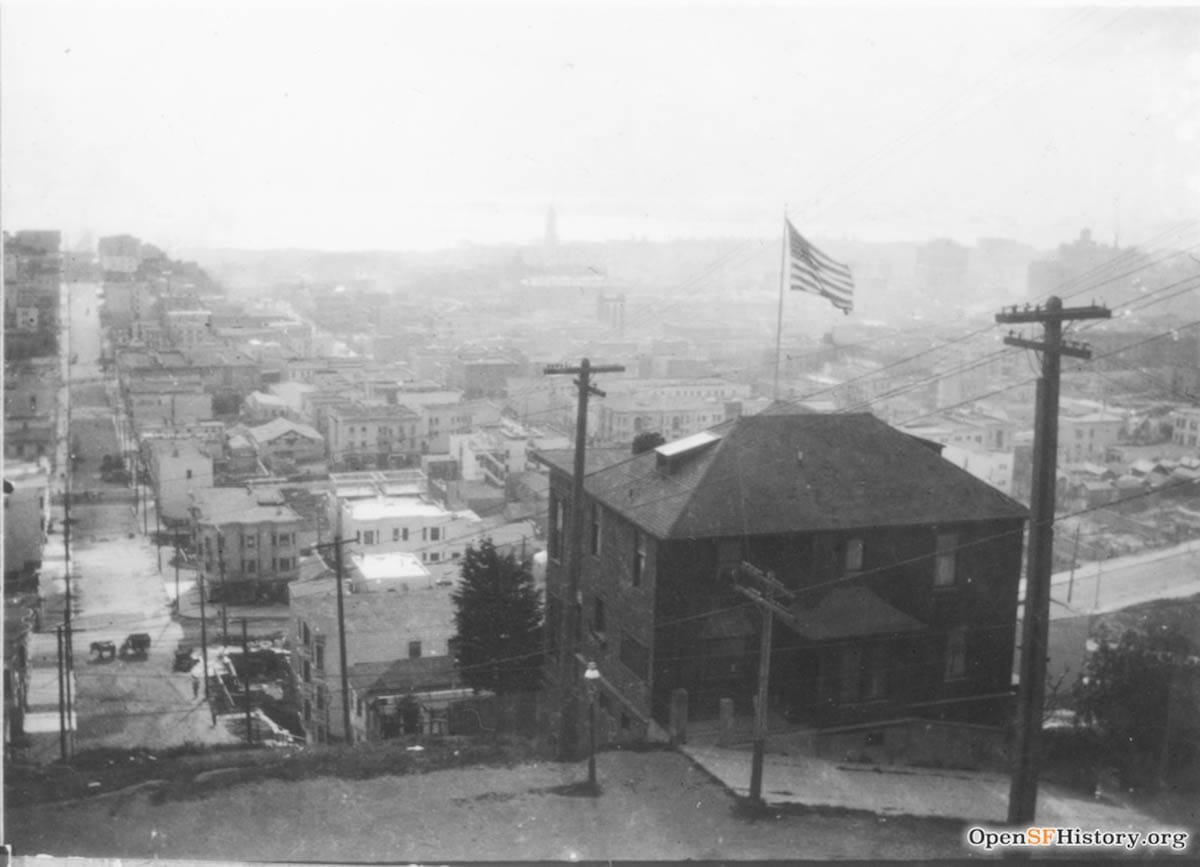
He ran back and hoisted up the stars-and-stripes, dipping it three times as a final salute.
Down the hill, two companies of soldiers saw the flag go up and down.
“I know what it is,” volunteered a young officer. “There’s a military headquarters established there, The fire is mighty close and they want help.”
As the Call told the story two months later, the men in khaki scrambled up the hill and for hours “tackled the sea of flames with bare hands.”
“They fought and they conquered and the Eli Sheppard house stands today a monument to the protecting power of the American flag and a tribute to the bravery of the flag’s protectors.”
(And a monument to poor intel, I suppose.)

Today 1652-56 Taylor Street is city landmark #46.
But no flag pole now? Come on, folks.
Mid-Story Memorial
Grief can be a weight, but in someways it can provide a grounding, a base to work off. The folks who have left me in the past three years still inspire me. There are things I write and feel good about writing because I think Arnold Woods or Denise Crawford or Fawn Fitter would enjoy them or, if in paper form, that my mother-in-law Donna Payne would proudly have displayed on her coffee table.
It’s kind of neat that those who have departed can keep giving to the world. A goal maybe we still here should shoot for?
Grundsteinlegung
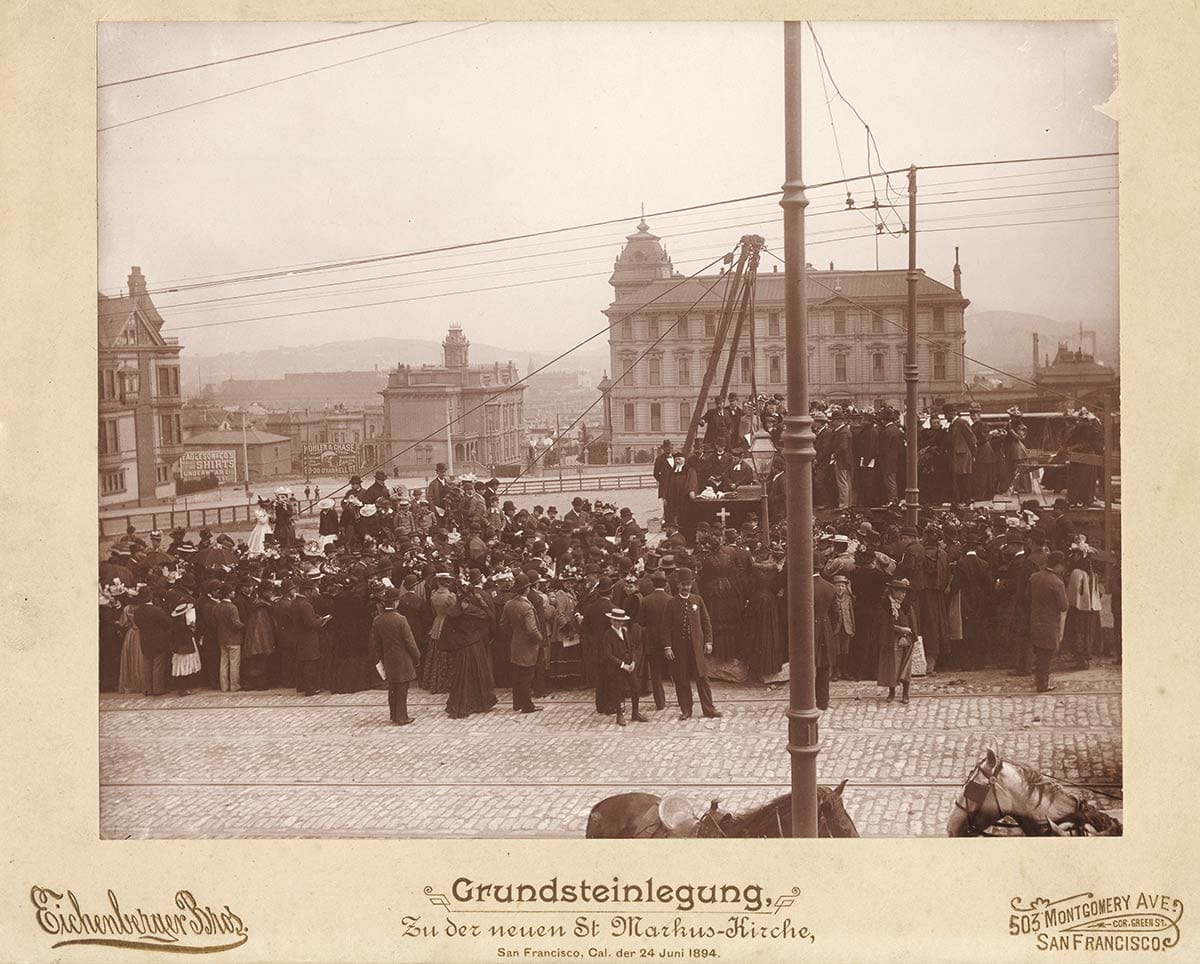
Some places are just survivors. In San Francisco, we have to give St. Mark’s Lutheran Church its props. The building got through the 1906 earthquake and fire and then the San Francisco Redevelopment Agency’s urban renewal madness.
The above photo of the June 24, 1894 grundsteinlegung for the mostly German-speaking congregation has some nice people-details if we zoom in:

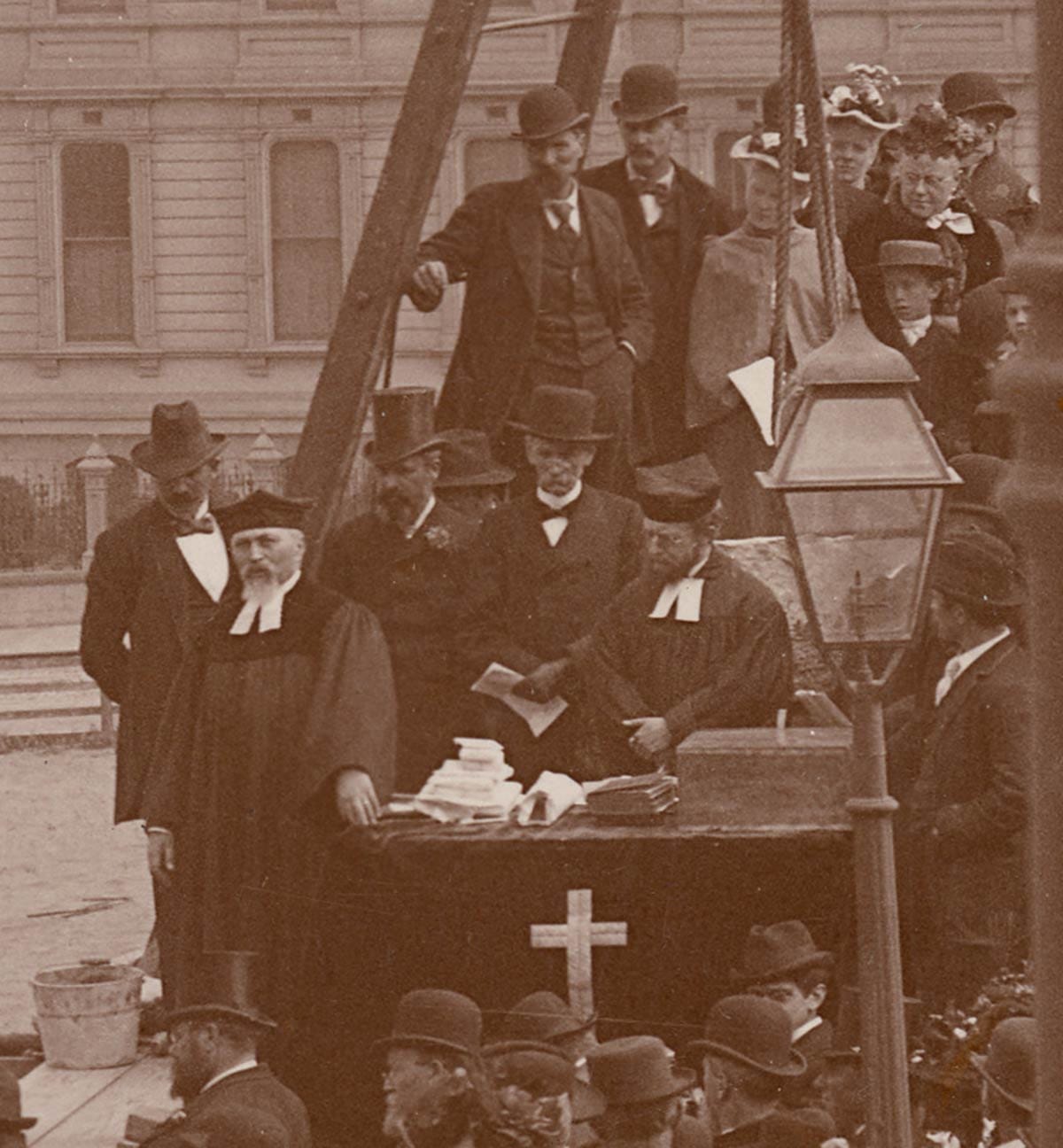
The church used to be right on the sidewalk at 1111 O’Farrell Street and now, after the city reconfigured Geary and O’Farrell streets into swooping one-way tributaries for Geary Boulevard in the 1950s, its entry steps run to an alley accessing a parking lot.
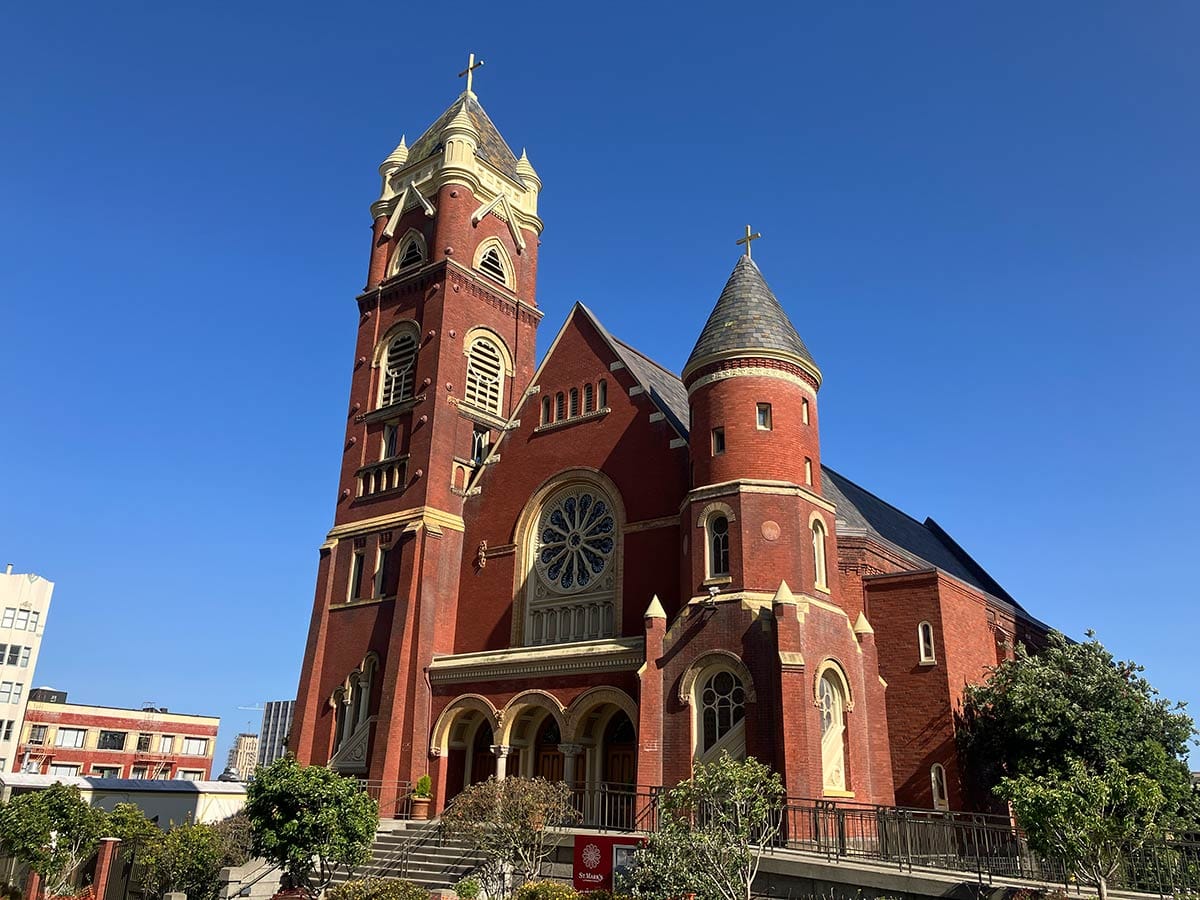
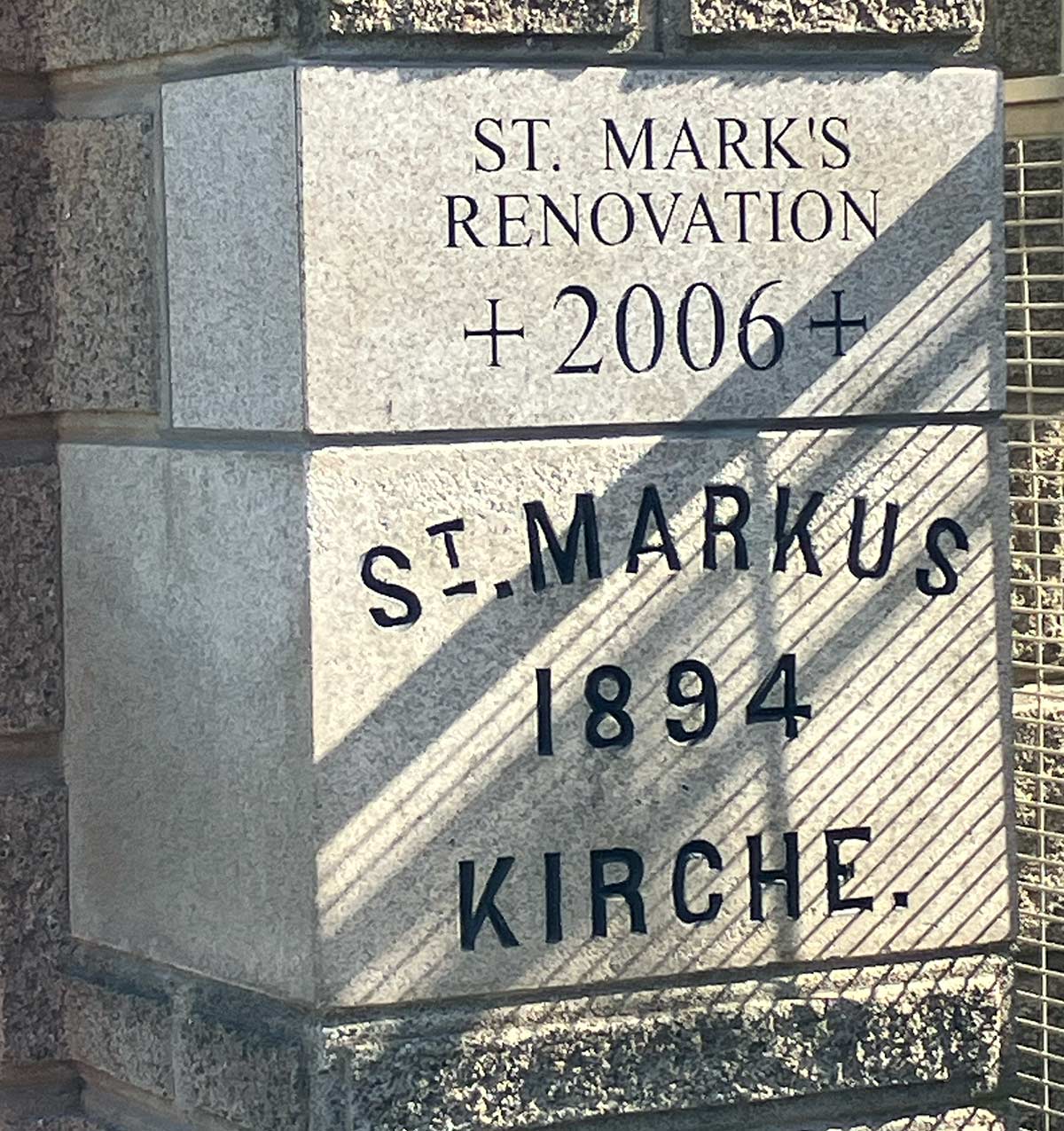
Oh, and that prominent building in the background of the groundbreaking photo? That's my high school alma mater on Ellis Street, in 1894 known as Sacred Heart Academy, now called—ooo la la—Sacred Heart Cathedral Preparatory.
The version I attended from 1979 to 1983 wasn’t as cool as either the historic building or the one that stands on the site today. And my version did not “preparatory” me very well.
Let us rewind the clock ...
Words of Inspiration #1
One day in the last weeks of my time at Sacred Heart High School, Mr. Hargrove saw me walking in the hallway and called me over to his office. In addition to being my social studies teacher, he was officially my college counselor.
I didn’t make use of his latter services at all, which perhaps was his inspiration for the conversation.
“Did you get in anywhere?” he asked.
I told him I had been accepted at UC Berkeley.
“You think you will do well there?”
I told him I did.
“You won’t.”
I am not sure what he saw in me that gave him that opinion. He was the head of the department and I had just been given the award as best Social Studies student in the senior class.
Perhaps he didn’t see “bottom” in me, thought I was skating by on charisma and glibness rather than hard work, and that Berkeley would quickly reveal my apparent academic aptitude as a sham. Maybe he thought sharing his prediction would inspire me to live up to my potential, prove him wrong, and therefore spur me to great success.
But he was right in what he told me. I flunked out of college in rapid style and never went back beyond some City College for enjoyment and to learn some technical skills. Even then, I got an F in tap dancing class.
Words of Inspiration #2
Framed on the wall of my sanctum sanctorum I have a crinkled school project from perhaps 2nd grade. On tan construction paper is a scissored owl from a workbook with vocabulary words, now faded, pasted on its body.
The owl is indifferently crayoned brown and in the background I drew a crude tree and branch. I scrawled my name in pencil on the side.
In red ink beside my name is written, “Poor cutting, poor coloring, poor background” and the grade: D.
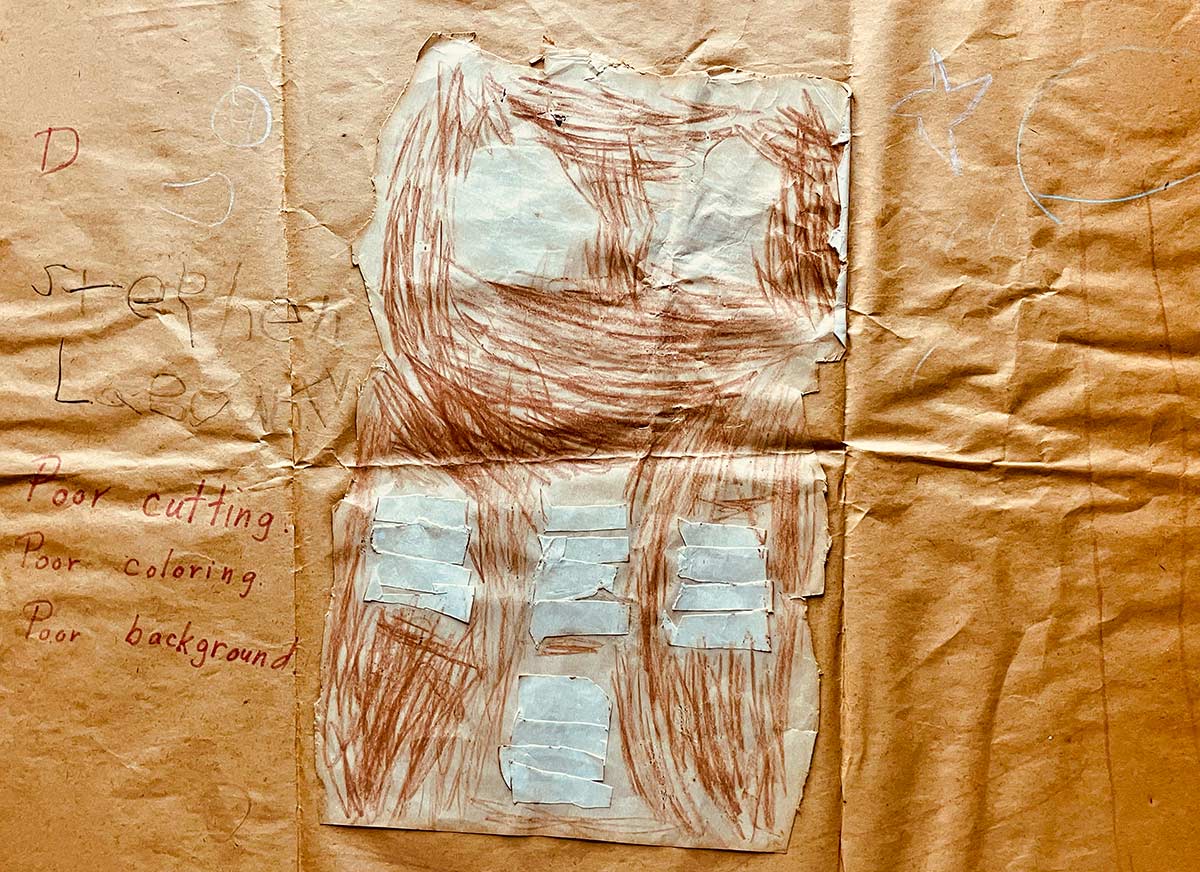
When I found it as an adult in my grandmother’s trunk, I framed it, partly because the over-descriptive assessment by my 2nd grade teacher is funny, but also because I am touched my grandmother held on to it.
That’s some love there. Or maybe she thought it was funny as well.
Bowl-a-Rama
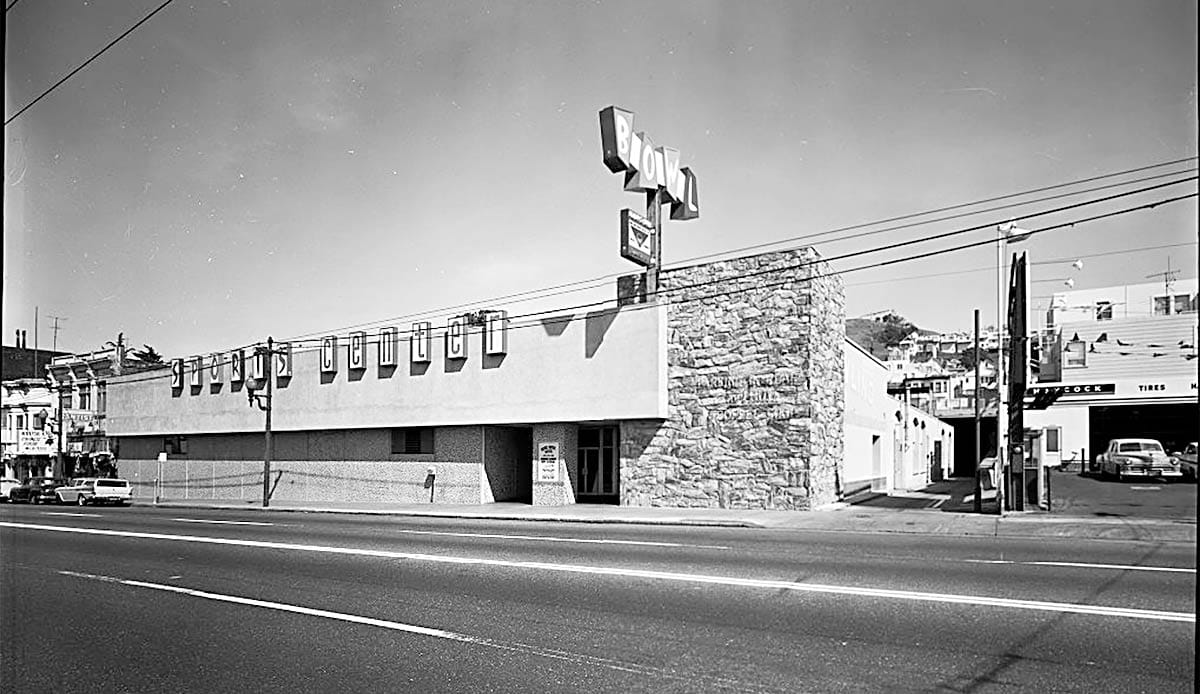
I once owned a bowling ball. I actually asked my parents for it as a gift one Christmas when a young teen.
As kids, Gabriel Gonzalez and I used to travel the city (and sometimes the suburbs) on public transit to visit different bowling alleys. Same with movie theaters. It was how I came to know and love the different neighborhoods.
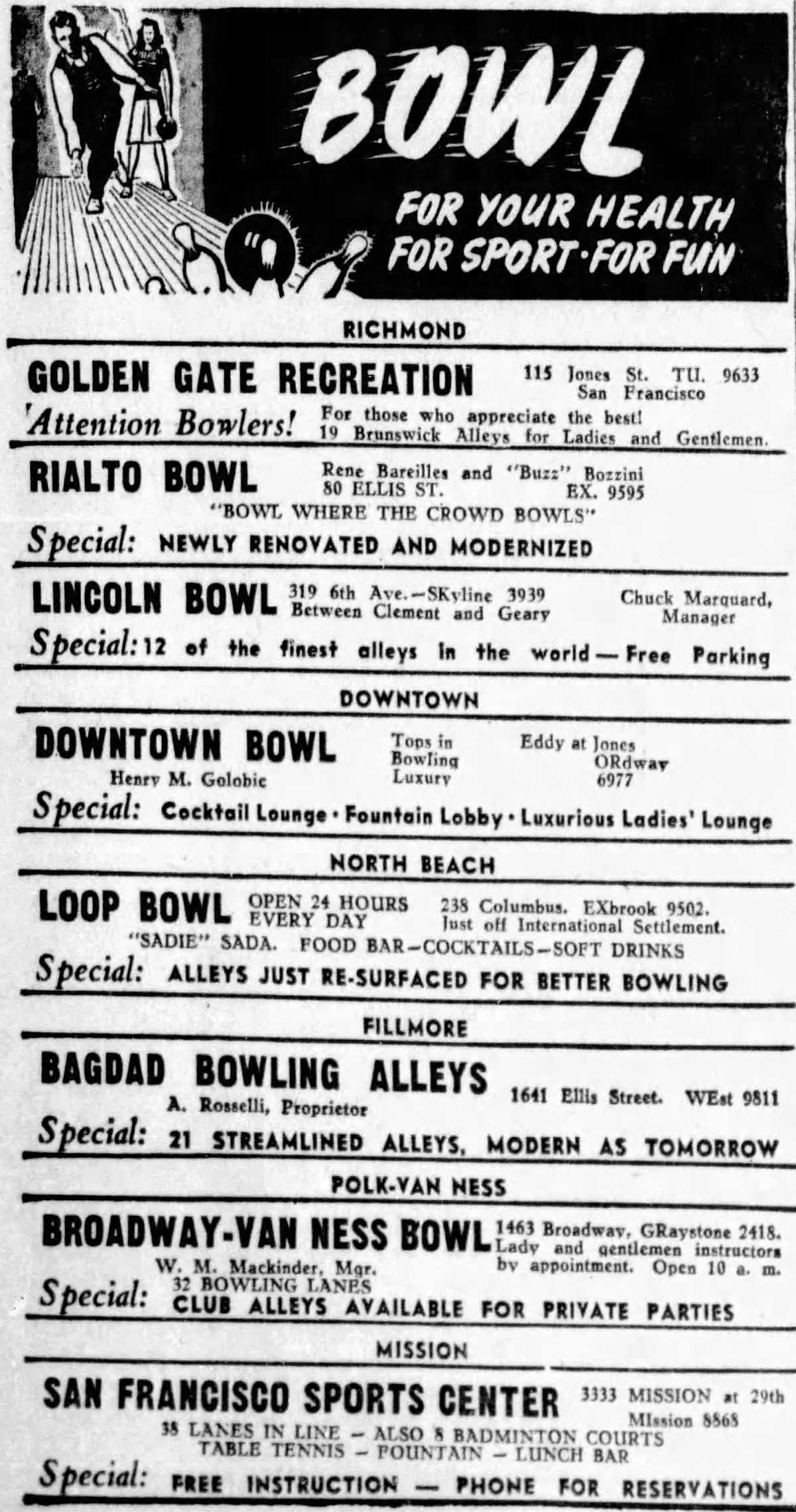
The first place I bowled was in my neighborhood, at Lincoln Bowl on 6th Avenue in the Richmond District. My mom took me there when I was maybe six. It closed shortly afterwards.
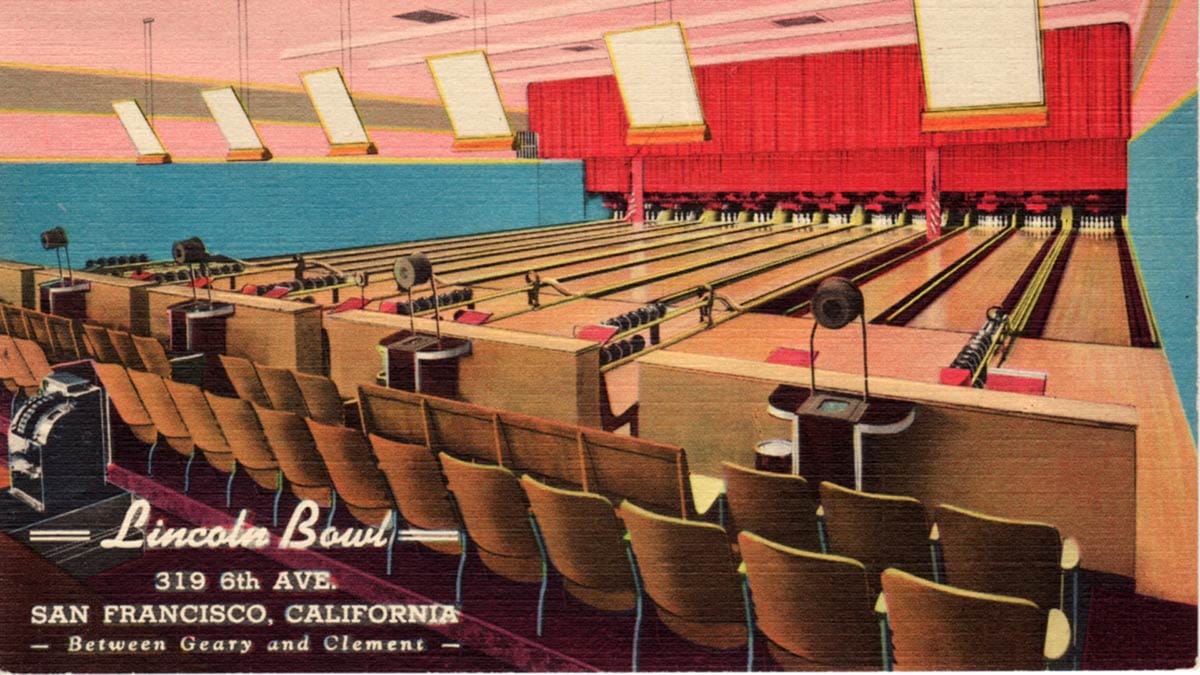
For Gabe and me, our primary go-to was Japantown Bowl—so modern, and multiple stories! Like all bowling alleys it was dark and moody, but its amber lighting had a true 1970s vibe.
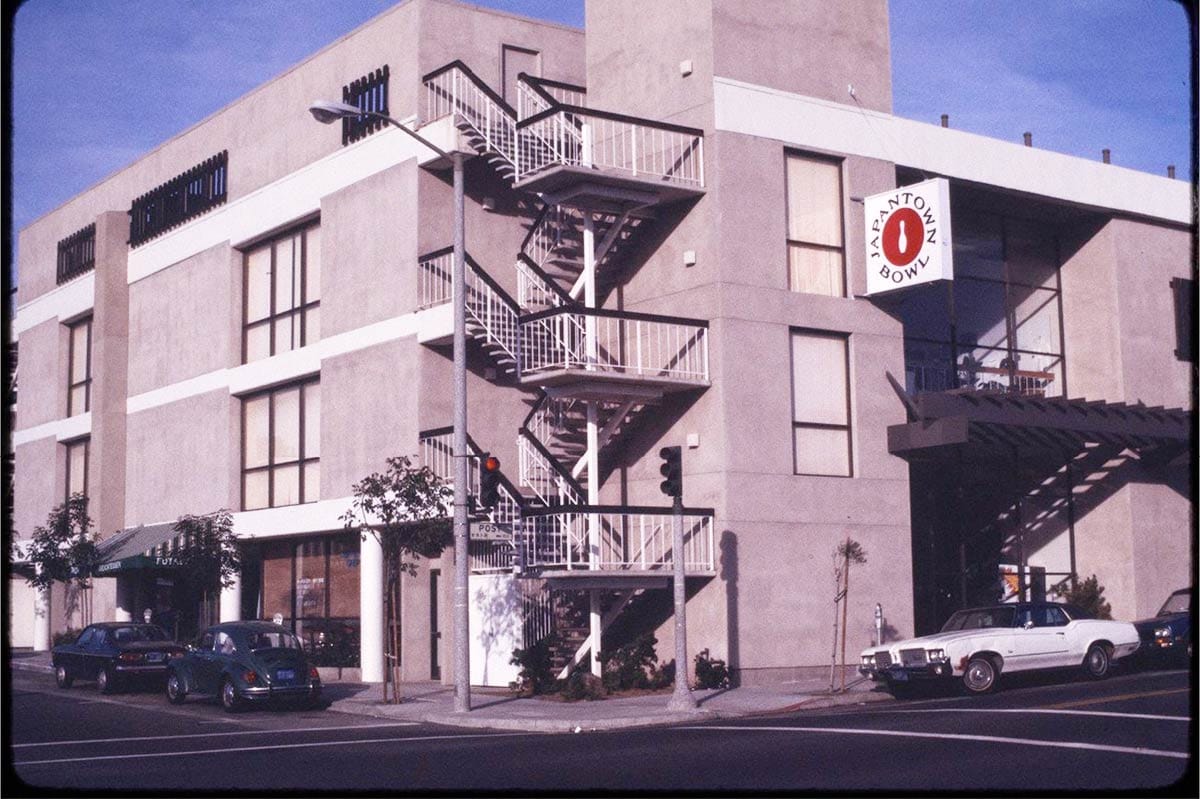
I also think a lot about Downtown Bowl, which was in the Tenderloin. It was probably the edgiest place for a kid to travel to without adult supervision, although even in the 1970s it had guys who looked like this bowling:

The news caption for that shot:
“Setting their sights...Ken Davis, left, and Paul Montalto, former News Diamond Medal bowling champions, have an appreciative - and lovely, too - rooting section at Downtown Bowl as they set their sights on the crown in the 16th annual tournament. The Misses Ann Bisgood and Pat McGee are hostesses for Pan-American Airways. Winner of the event will be presented a Pan-Am ticket to Honolulu and return in addition to a diamond medal and the Weiland Perpetual Trophy.”
No flight attendants that I remember at Downtown Bowl when I went. I wonder if the Weiland trophy is still perpetual?
Nancy and I went to “Rock & Bowl” (Park Bowl) on Haight Street for our first date in 1992.
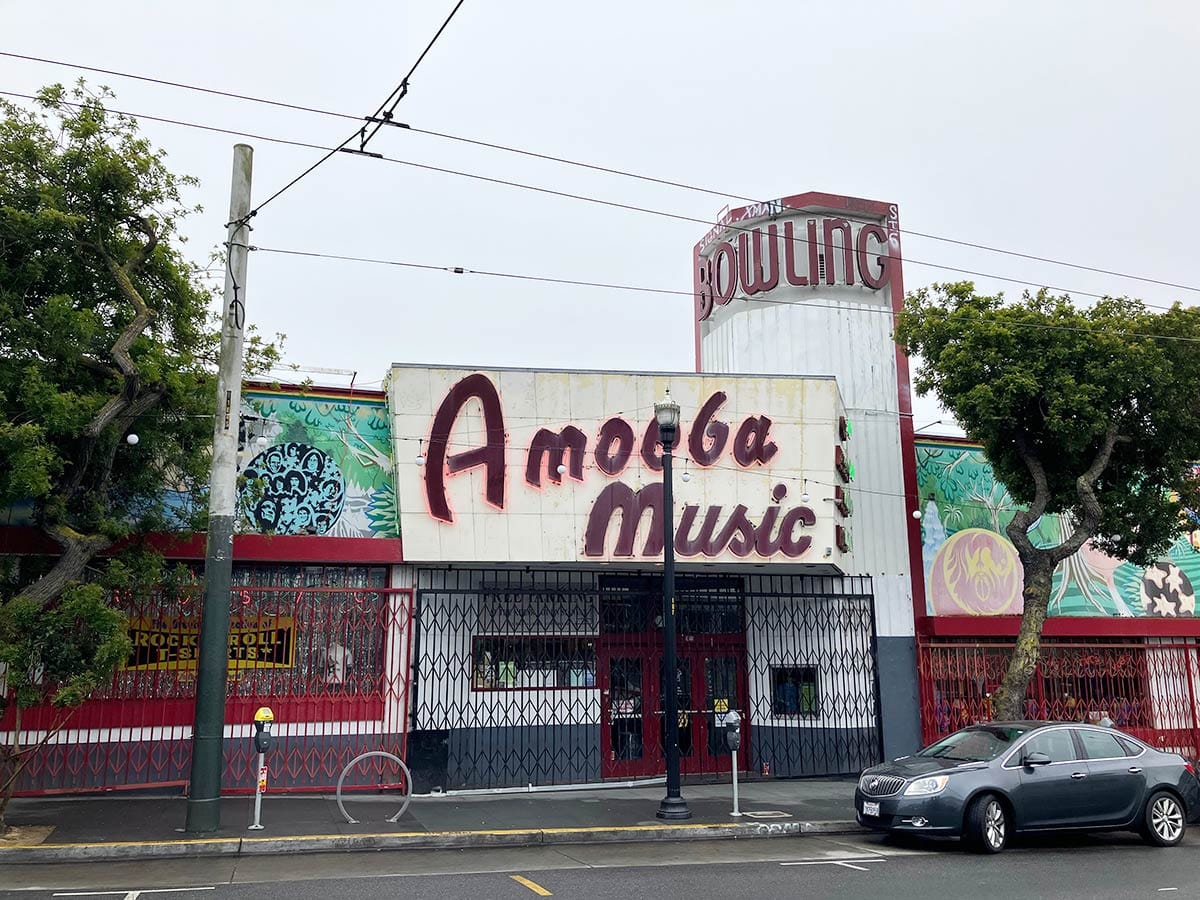
Amoeba Records/Music took over the 24,000 square foot space in November 1997 and in 2025 seems to be hanging on.
“CDs are here to stay…” wrote Chronicle reporter Sam Whiting on Amoeba’s opening day. He had the foresight to finish the sentence with “until the next planned obsolescence.”
Nancy and I have returned to buying CDs because online options turned maddening with connections, DRM restrictions, ads, etc.
Luckily our car may have been the last manufactured with a CD player. That will be handy when I give up my cell phone.
Sad Bowling
In 2000, Robert Putnam’s book Bowling Alone was a big deal. He wrote about the United States’ loss of “social capital,” how Americans were no longer participating in leagues, associations, and clubs. You know, like the Danish Tug of War Team:
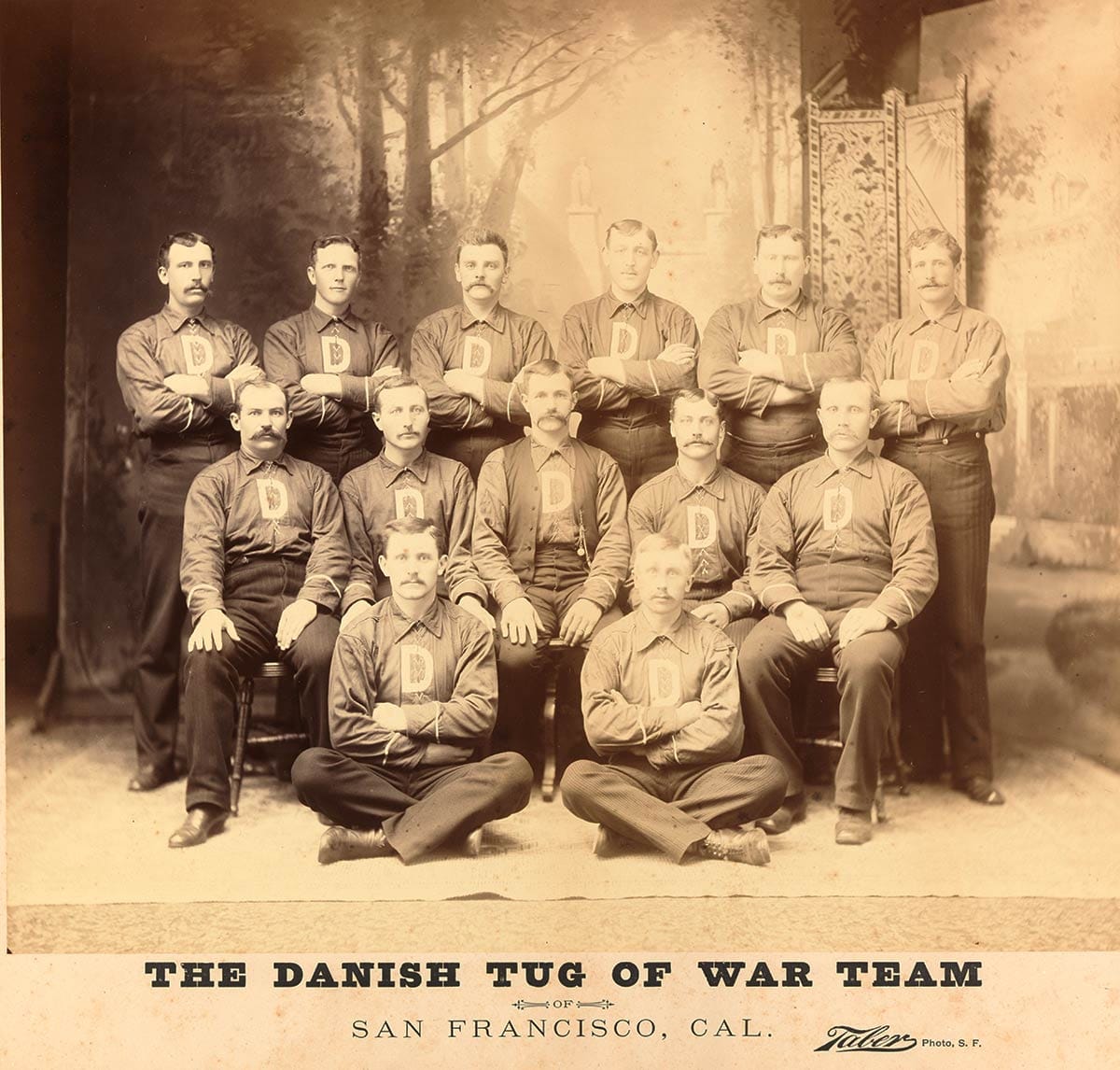
Putnam’s titular example was that in the 1990s more people bowled, but that bowling in league teams had declined. We weren’t bonding or being civically engaged. We were all retreating into our little boxes. To Putnam, democracy itself could be imperiled by such self-isolation.
Twenty-five years later, with phones and social media and Netflix and post-pandemic catatonia and the state of our government and our insane public discourse, my hot take has to be yup, sure seems so.
Face to Face
What’s the cure? It seemed the existence of bowling alleys and movie theaters isn’t enough (although essentially my day job is helping to keep places like that going).
I just finished The Library Book by Susan Orlean (a Christmas gift from David Gallagher, thanks for that). In it a librarian tells the author his hero is Albert Schweitzer and attributes a quote to him:
“All true living takes place face to face.”
I can’t find anywhere that Schweitzer ever said that, but that line definitely resonates. Despite what the deceased pope said, I am primed for the back-to-analog revolution and being with people in person.
Who reading this on their iPhones is ready to join me? (Oh, whoops...)
I love that you are all here for me by virtually reading this, but let’s take some small steps towards that face-to face-life again. I long ago lost my bowling ball, but we can have a drink together...
Woody Beer and Coffee Fund

Shall we toast to three more years? The Woody Beer and Coffee Fund is flush. Please inform me of your availability and I shall meet thee to sip, quaff, or tipple as the situation requires. (I pay, is the rule, remember.)
Guess Where Answer
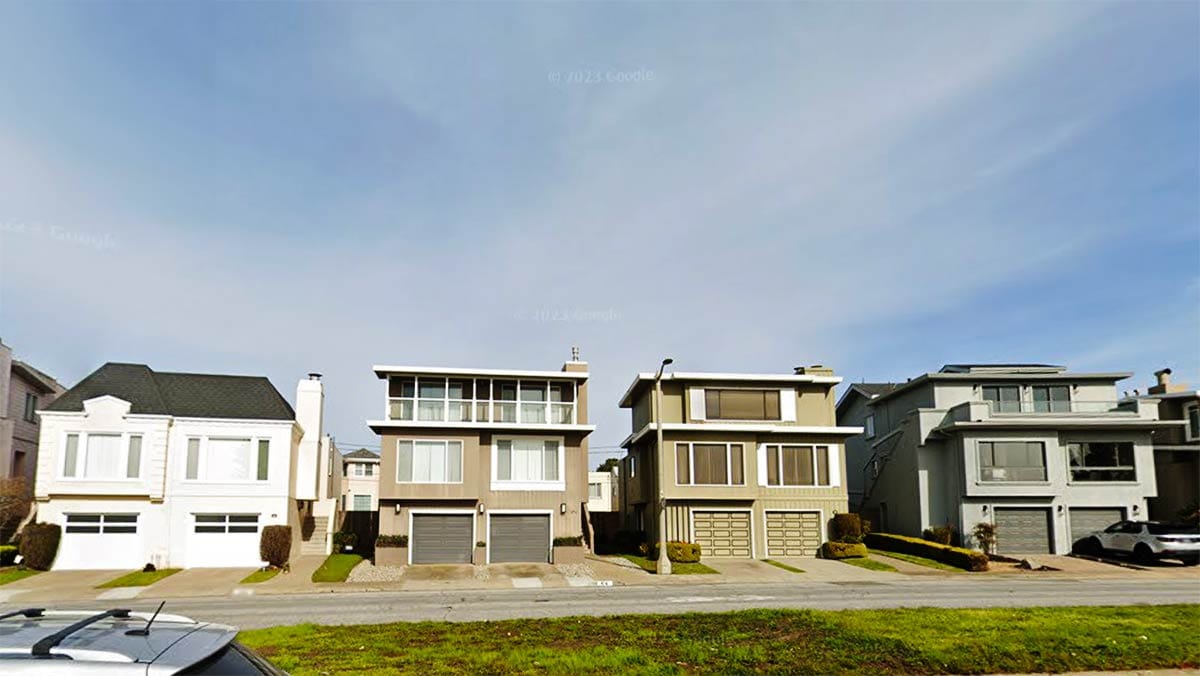
Oh, the Guess Where, right! We were looking at 474 and 482 Gellert Drive, both looking pretty good today (above), although those 1954 paint schemes totally ruled.
You have likely driven past this block on adjacent Lake Merced Boulevard going between Stonestown and Sunset Boulevard on the north side of the lake. The pop-up top stories of these two-car-garage homes were advertised as “sky rooms” by the Standard Building Company.
The photo is by Milton Begen in 1954. David Gallagher has scanned a bunch of this gentleman’s slides. You can see more (including our Guess Where) at sfmemory.org
Sources
“Canadians Win Twice," San Francisco Examiner, February 7, 1892, pg. 5.
“Eli T. Sheppard's Residence Saved by American Flag," San Francisco Call, June 9, 1906, pg. 5.
Sam Whiting, “Amoeba Records Engulfs the City,” San Francisco Chronicle, November 17, 1997, pg. D1.

